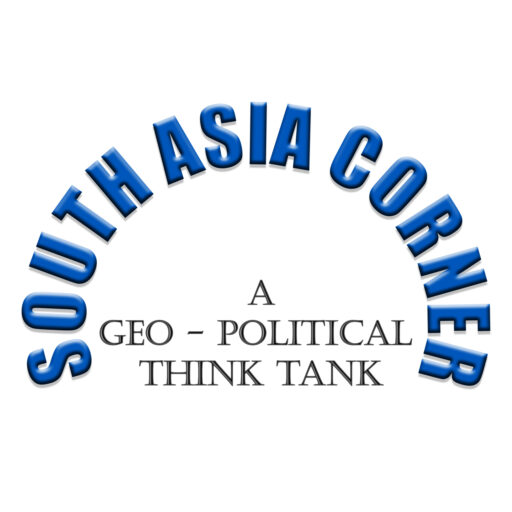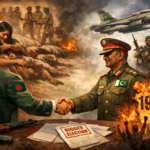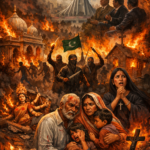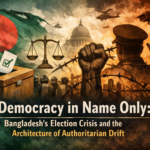Bangladesh, a country of paradoxes, has shown resilience and commendable progress in several economic and social indices. However, its political landscape remains in flux. The latest change in leadership signifies another chapter in the nation’s unfolding story—a moment that holds the potential to steer its flight path towards a brighter future. This article aims to provide a comprehensive, neutral analysis of the recent political shift in Bangladesh, considering its implications for governance, development, and the country’s standing in the global arena.
#### **Introduction: The Current Political Shift in Context**
Over the past few years, Bangladesh has experienced significant changes in its political leadership and state mechanisms. The most recent alteration in leadership is a case in point. With elections just around the corner, political alliances are evolving, and new faces are emerging in key positions of power. This phenomenon isn’t new; the political environment in Bangladesh has always been marked by its dynamic nature and the continuous ebb and flow of power between the major political entities. The upcoming elections are a crucial moment for the nation’s future trajectory.
The recent change of guards, whether viewed as a routine power transition or as a seismic shift, could set the stage for the next decade of governance and policy-making in Bangladesh. To fully comprehend the impact of this change, it’s essential to delve into the historical context of the nation’s political environment, analyze the present dynamics, and speculate on what the future holds.
#### **Historical Background: A Brief Overview of Bangladesh’s Political Landscape**
Since gaining independence in 1971, Bangladesh has undergone a series of political transformations. Political instability, military coups, and authoritarian rule marred the early years. The introduction of democracy in the 1990s marked a turning point, but even then, the country remained ensnared in a cycle of confrontational politics primarily dominated by two parties—the Bangladesh Awami League (AL) and the Bangladesh Nationalist Party (BNP).
– **1971–1990: Post-Independence Struggles and Military Rule**
After a brutal war of independence, Bangladesh started its journey as a nascent nation under the leadership of Sheikh Mujibur Rahman. However, political dissent, economic crises, and social unrest led to his assassination in 1975, ushering in an era of military rule that lasted until 1990. This period witnessed multiple coups and counter-coups as the military asserted its control over the fledgling state.
– **1990–2008: The Democratic Experiment and Political Volatility**
The restoration of democracy in 1990 was seen as a beacon of hope, yet it came with its own challenges. The two major political parties—the Awami League (AL) and the Bangladesh Nationalist Party (BNP)—began an era of intense rivalry. The political landscape became highly polarised, with each party adopting a zero-sum political approach.
– **2008–2023: Consolidation of Power and Economic Progress**
Since 2008, the Awami League, led by Sheikh Hasina, has maintained a stronghold on power. Her leadership is marked by efforts toward economic development, infrastructural growth, and digital transformation, as well as accusations of democratic backsliding, suppression of dissent, and allegations of electoral irregularities.
#### **The Recent Change: A Moment of Transition**
The latest change of leadership in Bangladesh, marked by the reshuffling of key ministerial and bureaucratic posts, signals a potential shift in governance philosophy. This change comes at a time when Bangladesh stands at a critical juncture—poised to graduate from the United Nations’ Least Developed Country (LDC) status and facing challenges related to economic diversification, social development, and climate resilience. The implications of this change on Bangladesh’s global standing, particularly in terms of international relations and trade agreements, are yet to be fully understood.
Key aspects of this recent change include:
1. **Reshuffling of Key Ministries and Bureaucratic Posts:**
The reshuffling has brought new faces to the forefront of governance. These changes might indicate an attempt to inject fresh perspectives into policy-making or could reflect internal power balancing within the ruling party. Monitoring how these new leaders approach economic policies, foreign relations, and social issues is crucial.
2. **Implications for Political Stability:**
With the elections approaching, the ruling party’s manoeuvres could aim to solidify its base or mitigate dissent within its ranks. On the other hand, the opposition, primarily the BNP, is still reeling from past electoral setbacks and internal conflicts, leaving the question of a viable political alternative uncertain. This uncertainty could significantly affect Bangladesh’s future political stability and governance.
3. **Impact on Governance and Policy Direction:**
Changes at the top echelons of power often trickle down to impact governance at various levels. The new appointments will likely influence policy direction, especially in infrastructure development, social welfare programmes, and digital transformation initiatives.
#### **A Turbulent Governance Landscape: Bureaucracy, Military, Civil Society, and Technocrats**
Bangladesh’s governance has long been characterised by a lack of cohesion among key state apparatuses. The bureaucracy, military, civil society, and technocrats have historically operated in silos rather than functioning as an integrated system working towards a shared national vision. This lack of harmony has been one of the primary factors contributing to governance turbulence. It’s crucial to address this issue and work towards a cohesive national vision, where professional excellence and strategic foresight are not overshadowed by partisan interests and factional politics.
– **Bureaucratic Fragmentation:**
The bureaucracy in Bangladesh, despite being well-versed in public administration, has often been criticized for its slow response and lack of alignment with national priorities. This disconnect stems from political patronage and frequent interference, which has eroded professionalism and resulted in an inefficient administrative apparatus that struggles to implement policies effectively.
– **Military and Civil-Military Relations:**
Although Bangladesh has been free from direct military rule since the 1990s, the military still wields considerable influence, particularly in national security and disaster management. Civil-military relations have seen sporadic tensions, and the military’s role in state affairs has, at times, complicated the democratic process, leading to an uncertain balance between civilian leadership and military influence.
– **Civil Society and Technocrats:**
Civil society and technocrats have traditionally been the voices of reason and vision, advocating for progressive policies and reforms. However, their role has been increasingly marginalised due to the dominance of partisan politics. The lack of meaningful engagement with these sectors has led to a deficit of visionary leadership and long-term planning, hindering Bangladesh’s ability to formulate cohesive national strategies.
– **Professionalism and Vision Deficit:**
One of the critical issues plaguing Bangladesh’s governance is the deficit of professionalism and a coherent national vision. Rather than merit-based placements, political appointments often dictate key bureaucratic and technical positions. This erodes the professional capacity of the state apparatus, resulting in short-term policy planning and disintegrated efforts across different government arms.
#### **The Disintegrated National Perspective**
The culmination of these internal dissonances has led to a fragmented national perspective, where different power centers pursue conflicting agendas. This disintegration is most visible in the lack of long-term development planning, inadequate policy continuity, and ineffective governance mechanisms. Despite ambitious initiatives like Vision 2041 and Digital Bangladesh, the nation’s journey has been marred by conflicting priorities and administrative bottlenecks.
The new leadership will face the challenge of bridging these divides and fostering a more integrated and collaborative approach to governance. Achieving a unified national perspective is crucial for Bangladesh to navigate its economic, social, and geopolitical challenges effectively. Without it, the nation risks stalling its developmental progress and missing the opportunity to solidify its position as a rising South Asian power.
#### **Parabolic Trajectory: Where is Bangladesh Headed?**
When viewed through a broader lens, Bangladesh’s growth story can be likened to a parabolic trajectory—an arc that rose sharply but now faces the challenge of sustaining its momentum. The current political change might seem like a minor adjustment, but it has the potential to tilt the balance in either direction. Several key factors will determine whether Bangladesh continues its upward climb or experiences stagnation.
1. **Economic Growth vs. Social Equity:**
Over the past decade, Bangladesh has posted impressive GDP growth rates, largely driven by its booming garment industry, remittances, and a surge in infrastructural investments. However, the country’s economic trajectory has been accompanied by growing income inequality, youth unemployment, and regional disparities. The new leadership will need to address these issues to ensure that economic gains translate into tangible benefits for all segments of society.
2. **Democracy and Governance:**
The nature of governance under the new leadership will be a key determinant of Bangladesh’s future. In recent years, there have been concerns about democratic backsliding, with allegations of curbed freedoms, a compromised judiciary, and restricted political space for opposition. A shift towards more inclusive and transparent governance could bolster international confidence and internal stability, whereas continued autocratic tendencies could isolate Bangladesh globally.
3. **Climate Resilience and Sustainable Development:**
Being one of the most climate-vulnerable nations in the world, Bangladesh’s trajectory is heavily influenced by its ability to implement climate resilience and sustainable development policies. Leadership prioritising these areas could set the nation on a path to becoming a global example in climate adaptation. Conversely, neglecting these issues could lead to severe socio-economic disruptions.
4. **Geopolitical Positioning:**
Bangladesh’s strategic location between South and Southeast Asia places it at the crossroads of major geopolitical interests, particularly those of India and China. The recent leadership changes will likely impact how the country navigates its foreign policy, balancing economic and strategic partnerships without compromising national interests. The ongoing Rohingya crisis, relations with India, and participation in China’s Belt and Road Initiative are areas that will test the new leadership’s diplomatic skills.
#### **Conclusion: The Path Ahead for Bangladesh**
The recent change in leadership represents a significant moment in Bangladesh’s ongoing political narrative. As the nation stands at the cusp of new possibilities, its direction will depend not just on the decisions of the new leaders but also on the broader socio-political dynamics at play.
For Bangladesh to sustain its parabolic development trajectory, it must navigate the delicate balance between economic growth, democratic governance, and social inclusion. The latest political shift, therefore, is not just a change of guards—it’s a test of the nation’s resilience and capacity for renewal. Moreover, addressing the underlying governance turbulence, characterised by the lack of cohesion among bureaucracy, military, civil society, and technocrats, is crucial for achieving a unified and progressive national perspective. Whether this transition heralds a new dawn or a continuation of the old order remains to be seen, but one thing is sure: the stakes have never been higher for Bangladesh as it charts its course for the future.






